[vc_row full_width=”stretch_row_content_no_spaces” content_placement=”middle” css=”.vc_custom_1568379252442{margin-top: 0px !important;margin-bottom: 0px !important;border-top-width: 0px !important;border-bottom-width: 0px !important;padding-top: 0px !important;padding-bottom: 0px !important;background-color: #ef9329 !important;}”][vc_column css=”.vc_custom_1562233224184{margin-top: 0px !important;margin-bottom: 0px !important;border-top-width: 0px !important;border-bottom-width: 0px !important;padding-top: 0px !important;padding-bottom: 0px !important;}”][vc_column_text css=”.vc_custom_1562233536763{margin-top: 0px !important;border-top-width: 0px !important;padding-top: 3% !important;padding-bottom: 2% !important;}”]
EARLY YEARS
[/vc_column_text][/vc_column][/vc_row][vc_row full_width=”stretch_row_content” content_placement=”middle” css=”.vc_custom_1568379267649{margin-top: 0px !important;margin-bottom: 0px !important;border-top-width: 0px !important;border-bottom-width: 0px !important;padding-top: 0px !important;padding-bottom: 0px !important;background-color: #444444 !important;}”][vc_column css=”.vc_custom_1560507892231{margin-bottom: 0px !important;border-bottom-width: 0px !important;padding-bottom: 0px !important;}”][vc_column_text css=”.vc_custom_1569491810311{padding-bottom: 30px !important;}”]
Useful information, advice & websites
[/vc_column_text][/vc_column][/vc_row][vc_row][vc_column][vc_column_text]> Resources | > Early Years | > Useful information, advice & websites[/vc_column_text][/vc_column][/vc_row][vc_row][vc_column][gem_divider margin_top=”10″ margin_bottom=”10″][/vc_column][/vc_row][vc_row][vc_column width=”1/4″ offset=”vc_hidden-sm vc_hidden-xs”][vc_wp_custommenu nav_menu=”473″][gem_divider margin_top=”10″ margin_bottom=”10″][/vc_column][vc_column width=”3/4″][vc_column_text]
Early years is the term for under 5’s, children are classed as outside of the early years group once they attend full time school.
Early years learning starts at home with you and then can progress to nurseries, child minders or play groups. Expect your blind child to learn the same things as any other child, but realise that he/she may need to be taught differently.
Settings
Early years development in children with a visual impairment is just as important as it is for a child without. This takes place both within the home and if you choose to, an early years setting such as a nursery or play group.
There is no reason for you not to apply for your child to start a local nursery or playgroup, if this is what you want for your child. Similarly, there is no reason for you not to attend ‘mainstream’ parent and toddler groups. This promotes inclusive learning from an early age and it will you help you to learn how situations can be adapted for your child.
If you do choose to put your child is an early years setting they do not have to be specifically designed for children with visual impairments. It is necessary to contact your Local Authority to see how your child can be supported in the environment. This can be done in a variety of ways, including training for existing staff or having the QTVI (Qualified Teacher for the Visually Impaired) work with your child in the setting.
Portage
If you choose to keep your child at home with you during the early years and before they start full time education, you may be able to access help from the Portage Association. Portage is a home-visiting educational service for children age 0-5 years who are considered to have special educational needs. They not only support the child but also their families.
Portage workers provide a home teaching service for pre-school children, which may include physical, sensory impairment or learning difficulties. They provide help and support for the children’s parents/carer and can help them learn how to teach their children skills through a carefully structured and flexible programme. Find out more on the Portage Website: www.portage.org.uk
Learning through play
A lot of emphasis is placed on learning through play during the early years. Learning through play is a term used in education and psychology to describe how a child can learn to make sense of the world around them. How that might look to a child who has a visual impairment can differ greatly dependent on the extent of the visual impairment and the child’s own unique personality.
Through play, children can develop social and cognitive skills, mature emotionally, and gain the self-confidence required to engage in new experiences and environments. Therefore, it is important to expose your child to the world as much as possible. You must always considering that their visual stimulation will be less that that of a child who doesn’t have a problem with their sight. Be creative and stimulate all senses, including their sight. There are many ways you can stimulate what sight they have.
Key ways that young children learn include:
- Playing
- Being with other people
- Being active
- Exploring new experiences
- Talking to themselves
- Communication with others
- Meeting physical and mental challenges
- Being shown how to do new things
- Practising and repeating skills
- Having fun
Overtime you will learn this as you get to know your child and utilise all the professionals you can to get more information about the best way to facilitate this kind of learning.
Social and learning inclusion
There can be problems with social inclusion associated to visually impaired children. Difficulties that young blind children can experience in accessing play can impact how they develop important social skills. Encouraging visually impaired children to socialise and to make bonds during this crucial age is important. Blind children are vulnerable in terms of making and sustaining friendships. Probably the two most important factors to consider on the social development of blind children is making friends and accessing learning.
Useful links
Here are some useful links for you to explore online, which are helpful for both parents and practitioners:
National Federation of the Blind: How does the blind child learn?
nfb.org/images/nfb/publications/fr/fr04/issue2/f040207.html
Nursery World: Including children with impaired vision
www.nurseryworld.co.uk/nursery-world/news/1087262/children-impaired-vision-play
Perkins Learning: Early Childhood
www.perkinselearning.org/scout/topics/early-childhood
Positive Eye: Resources
www.positiveeye.co.uk/resources-2
RNIB: Play for children with complex needs
www.rnib.org.uk/insight-online/play-for-children-with-complex-needs
RNIB Teaching and Learning Guidance
Royal Blind Learning Hub: Early Years Tactile Resources (video)
www.youtube.com/watch?v=j1VSSnbE67Q
Teaching children with visual impairments: Early Childhood Programme
www.teachingvisuallyimpaired.com/early-childhood.html
Teaching Early Years: Understanding Visual Impairment
www.teachearlyyears.com/a-unique-child/view/sen-understanding-sensory-impairment
Wonder Baby: Development Guidelines for Infants with Visual Impairments
www.wonderbaby.org/articles/developmental-guidelines-infants-visual-impairment[/vc_column_text][gem_divider margin_top=”40″][gem_textbox][vc_column_text]
Add your details
If your organisation is not yet included on our list please get in touch at online@victa.org.uk and we will be happy to add you to our resources.[/vc_column_text][/gem_textbox][/vc_column][/vc_row][vc_row][vc_column offset=”vc_hidden-lg vc_hidden-md”][vc_wp_custommenu nav_menu=”473″][/vc_column][/vc_row][vc_row][vc_column offset=”vc_hidden-md vc_hidden-sm vc_hidden-xs”][gem_divider margin_top=”50″][/vc_column][/vc_row][vc_row full_width=”stretch_row” css_animation=”slideInLeft” css=”.vc_custom_1568889124706{margin-bottom: 0px !important;background-color: #444444 !important;background-position: center !important;background-repeat: no-repeat !important;background-size: cover !important;}”][vc_column][gem_divider margin_top=”20″][vc_column_text]
Related stories…
[/vc_column_text][gem_divider margin_top=”50″][/vc_column][/vc_row][vc_row css=”.vc_custom_1561028836256{margin-bottom: 0px !important;}”][vc_column offset=”vc_hidden-sm vc_hidden-xs”][vc_basic_grid post_type=”post” max_items=”12″ style=”pagination” items_per_page=”3″ arrows_design=”vc_arrow-icon-arrow_03_left” arrows_position=”outside” arrows_color=”black” paging_design=”pagination_rounded” loop=”yes” grid_id=”vc_gid:1582035706509-6db29b62-54ec-10″ taxonomies=”486, 501″][/vc_column][/vc_row][vc_row css=”.vc_custom_1561028836256{margin-bottom: 0px !important;}”][vc_column offset=”vc_hidden-lg vc_hidden-md”][vc_basic_grid post_type=”post” max_items=”12″ style=”load-more” items_per_page=”3″ element_width=”12″ btn_color=”black” grid_id=”vc_gid:1582035706510-bd2f499a-190d-6″ taxonomies=”486, 501″ css=”.vc_custom_1570113432755{padding-top: 40px !important;padding-bottom: 40px !important;}”][/vc_column][/vc_row][vc_row][vc_column][gem_divider margin_top=”40″][/vc_column][/vc_row]


